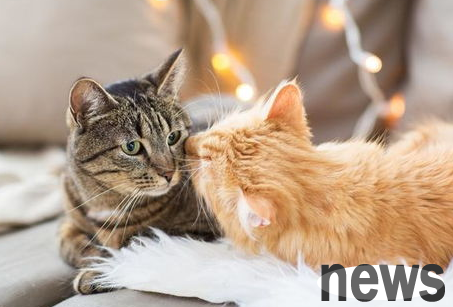Cat's lung examination, if you don't know, come and see it! The lungs belong to the respiratory organs. Like humans, the respiratory system of cats is also very subtle. For cats, the occurrence of respiratory symptoms may be caused by lesions in the lungs. Once they get sick, the respiratory tract can quickly enter a state of emergency. During diagnosis, it is very important to observe the cat's normal breathing pattern, and lung examination is also necessary, so that the best treatment can be adopted to ensure the health of the cat.

1. Routine examination:
Pulmonary function examination: For early detection of lung and airway lesions, identify the causes of dyspnea, diagnose the lesion site, evaluate the severity of the disease and its prognosis, and evaluate the efficacy of drugs or other treatment methods.
Breast position: pneumonia, tuberculosis, lung cancer, lung abscess, pleuritis, heart hypertrophy, mediastinal tumors, thymus tumors and other chest diseases.
Blood subsidence examination: Rapid blood subsidence is seen in rheumatism, acute infectious diseases, active tuberculosis, pneumonia, sinusitis, cholecystitis, various anemia, leukemia, acute endocarditis, myocardial infarction, and some malignant tumors.
Internal Medicine Examination: Check whether there are any abnormalities in the heart, lung, liver, gallbladder, spleen, kidney, intestine, and nervous system.
Computed tomography (CT) scan: It can be used in situations such as ultrasound does not provide a diagnosis. CT scans can help determine whether a lung tumor can be surgically removed. If a cat has respiratory distress due to lung fluid, removing some fluid will provide emergency rescue. Veterinarians will use or chest drainage tubes to drain. Once the cat has stabilized, it can be used in conjunction with other treatments.
2. Pulmonary auscultation:
Bronchial breathing sound: It is the sound of the breathing air flow forming turbulence in the glottis, trachea or main trachea, just like the sound of "ha" produced by lifting the tongue up and exhaling through the mouth. The bronchial breathing sound is high and the sound is strong. Compared with inhalation and exhalation, the exhalation sound is stronger, the pitch is higher and the duration is longer. A normal cat can hear bronchial breathing sounds near the throat, supraster fossa, 6th and 7th cervical vertebrae and 1st and 2nd thoracic vertebrae in the back.
Alveolar breathing sound: caused by the inlet and exit of the respiratory airflow in the bronchioles and alveoli. When inhaling, the air flows through the bronchial and enters the alveoli, causing the alveoli to change from relaxation to tension, and when exhaling, the alveoli to relaxation. The alveolar breathing sound is very similar to the "fu" sound made by the upper teeth when they bite the lower lip and inhale. It is a soft and blow-like nature, with a lower tone and weaker sound. Compared with inhalation and exhalation, the inhalation sound is stronger, the tone is higher and the time is longer than the exhalation sound. Alveolar breathing sounds are heard in the chest of normal cats except for the bronchial respiratory sounds and bronchial alveolar respiratory sounds.

Low-key dry rales: also known as snoring sound. The pitch is low, and its base frequency is about 100-200Hz. For example, snoring sounds during sleeping often occur in the trachea or main bronchus.
Coarse wet rales: also known as large and small bubble sounds. It occurs in the trachea, main bronchus or hollow areas, and often occurs in the early stage of inspiration. It is found in bronchodilation, severe pulmonary edema, tuberculosis or lung abscess cavity. Patients who are unconscious or dying are unable to discharge respiratory secretions, and can hear rough and wet rales in the trachea. Sometimes they can be heard without a stethoscope, which is called phlegm.
Medium wet rales: also known as small and medium bubble sounds, occur in medium-sized bronchos and mostly occur in the middle stage of inhalation. It is found in bronchitis or bronchopneumonia.
fine wet rales: also known as small water bubble sound. It occurs in the small bronchus and often occurs later in the inspiratory stage. Commonly found in bronchiopathy, bronchopneumonia, pulmonary congestion and pulmonary infarction.
Pleural friction sound: When the pleural surface becomes rough due to inflammation, pleural friction sounds can appear as you breathe. The nature of the sound varies greatly, some sounds are soft and subtle, while others are very rough. You can hear both inhaling and exhaling. Generally, it is more obvious when the inhalation is not started and when the exhalation is started. If the breath is held, the sound will disappear. When the breath is deep, the sound will increase. This can be used to identify the pericardial friction sound. Let the sick cat cover his nose and close his mouth and strengthen abdominal movement. At this time, even though there is no airflow in and out of the airway, pleural friction sounds can still be heard, which can be different from the crimping sound. The most commonly heard part of the pleural friction sound is the anterior and inferior chest wall, because the breathing dynamics in this area are the largest.